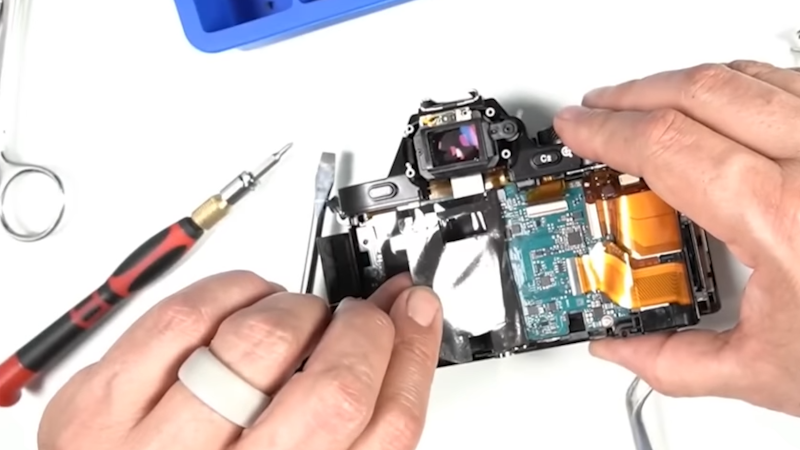Sony used to sell digital cameras that recorded on actual floppy disks. We’ve come a long way, but [Mathieu] put a floppy in a digital camera recently for an entirely different reason. First, though, he had to modify the camera to work on the full spectrum, something he covered in an earlier video. You can see both videos, below.
As you might expect, he didn’t actually put an entire floppy inside the camera. He used the internal disk portion as an infrared filter to obtain some striking photos. In all honestly, the results were not as nice as what you get from a very expensive professional filter. But the pictures looked great and the difference was not as much as you’d expect compared to the cost difference.
The real work, though, is converting the camera to full spectrum as seen in the second video. A normal camera has an IR filter to prevent the sensor from seeing IR light. This prevents the image sensor from capturing things your eyes don’t see. The modification replaces the filter with a clear filter.
We’ve covered this kind of conversion before. You can even do it with a Raspberry Pi, if you like.
















This or using developed film. Its pretty common. Its how I’ve made a few filters for astrophotography.
Yes, using exposed developed color film as IR filter is old trick. I wasn’t aware that floppy can be used for same purpose. Maybe I try it one day. :-)
What a coincidence, was just going through some stuff in my closet and came across my Sony Invicta floppy camera lol
I just saw mine this morning
I found one in a thrift shop for $20, so it was a “Must Have” item. I donated it to the local camera shop that collects old debris.
Actually it’s a Sony Mavica. I won mine in an online competition, what a toy to have at that time!
I think one of the weirdest discoveries I made playing with IR cameras [ usually removing the filter from cheap webcams ] is that, a certain black carbonated beverage, is transparent.
Webcam sensitivity isn’t overly high, but they’ll be able to see the tip of a soldering iron glow.
Black garbage bags was my “that’s odd” moment.
So he’s now doing Floppography
Plastic polarizing filters pass IR light well (Even when crossed) if you want to see IR + a variable amount of visible light.
Floppy disc discs, developed film, a stack of Primary Red and Congo Blue filter gels, etc. All sorts of methods to create a cheap nIR-pass filter. The hard part is getting an imaging sensor that does not have an nIR-cut filter. Outside of the RPi ‘NoIR’ cameras (with teeny little sensors limiting useful lens choice and exposure choice after filtering) any large sensor camera will require nIR-cut filter removal before use for practical multispectral photography. This can range from the merely terrifying disassembly required to access the sensor stack and replace the filter with a new cover-glass, to the outright petrifying of using a laser or chemicals to strip the filter array from the surface of the sensor itself.
Disassembly is easy, harder part is finding peace of glass with same thickness as removed IR-cut filter. On some cheap point and shoot cameras I used peace of CD box plastic, it was thick exactly as removed filter. And if you don’t replace filter with something, focusing won’t work correct.
I tried to use a floppy as an IR filter and found it did not in fact filter IR at all.
And yet everybody has been saying for years it would, instead it was just a density filter.
Odd.
And yes a real IR filter did work on the same sensor.
Anyway I guess there are floppies and then there are floppies?
actually a floppy is an ir filter it is similar to a 590-690.
I’d copy that floppy (hack)!